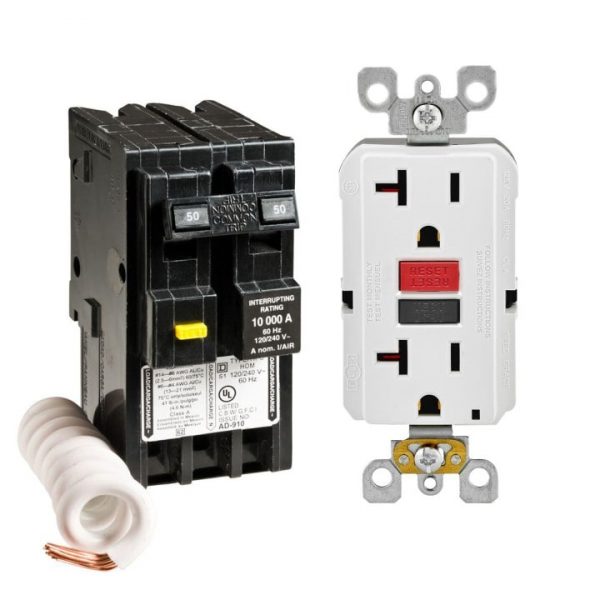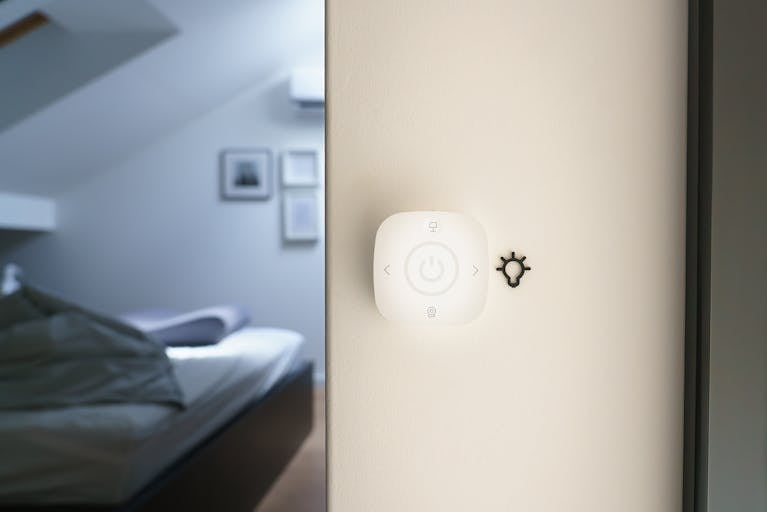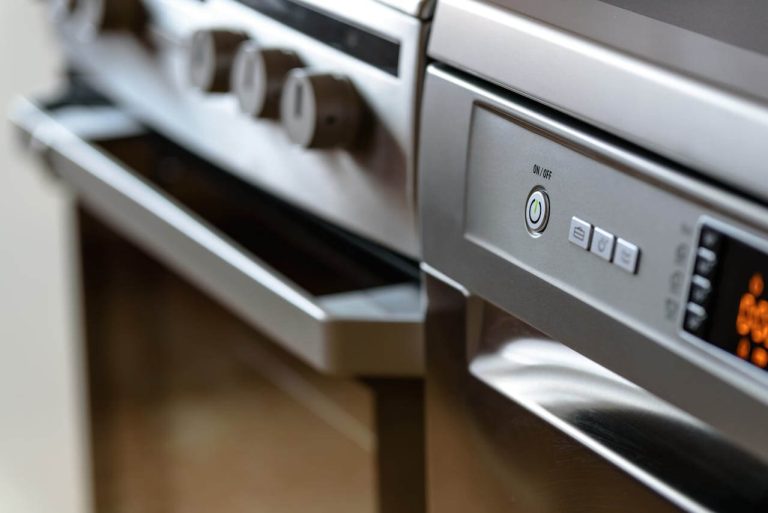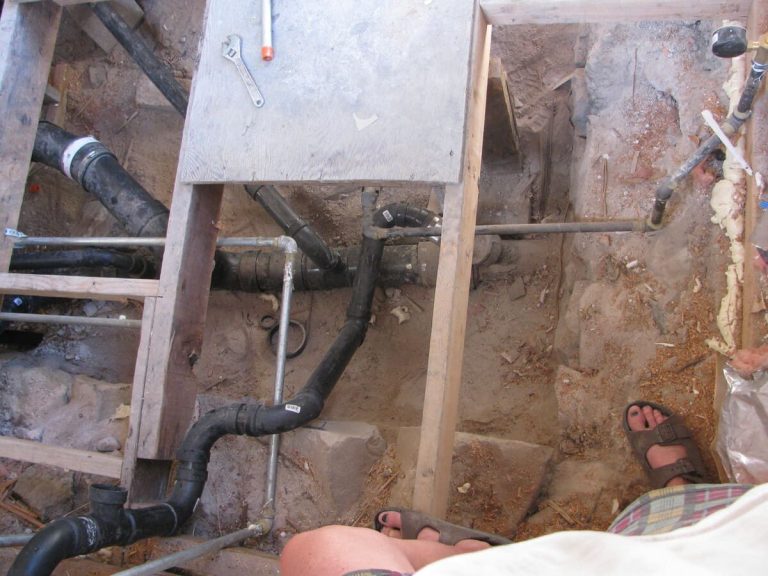GFCI Breaker & GFCI Receptacle: What Are the Differences?
GFCI is short for ground fault circuit interrupter. Its primary purpose is to be active during electrical currents and avoid instances of short circuits. This is especially crucial in areas that are near water. Hence, one of the best ways to prevent any electrical hazard is by installing either a GFCI breaker or a GFCI receptacle.
But are you aware of when and where you should use a breaker and a receptacle? We will give you a detailed explanation of both GFCI devices.

GFCI Breaker
GFCI circuit breaker protects the entire circuit. It can be built-in or can be added to your building. It is usually larger than a standard breaker panel and has tested and reset buttons to protect against ground faults.
One of the many benefits of a GFCI breaker is that installing it in a breaker box gives GFCI protection to the entire circuit, including all the wiring and all devices and appliances connected to the circuit.
But do you really need a GFCI breaker?
When to use GFCI Breaker?
1. You will need a GFCI breaker when most of your electrical outlets require ground fault protection.
2. Sometimes, outlet locations lack the space for bulky GFCI receptacles. This is when GFCI breakers can be placed.
3. You should use a GFCI breaker when you simply prefer the greater protection it provides.
4. When you have heated swimming pools, having a GFCI breaker provides protection.
Where to use GFCI Breaker?
1. You should install these breakers on electrical panels or sub-panels. When you use it for spas, GFCI disconnects are also required.
2. They are used in easy-to-service areas.
GFCI Outlet/Receptacle
GFCI receptacles are easier to install and recognize, as these power outlets have a test and reset button on the outlet’s face. When installing receptacles, it protects any electrical device plugged by ground fault. This even includes any electrical outlets that are connected on the same line.
If the receptacle detects any ground fault, it cuts the power to the entire line. Some receptacles give multi-location protection by protecting the individual outlet and any outlets resulting from the same circuit.
When to use GFCI Receptacle?
1. You can use a GFCI receptacle when you need a few GFCI outlets but do not want the expense of a GFCI breaker.
2. You should consider a receptacle when looking for a few outlets for a bathroom or kitchen.
Where to use GFCI Receptacle?
1. You can install a GFCI receptacle near utility rooms, attached garages, outdoors, near the pool or spa, and basements.
GFCI Breaker & GFCI Receptacle: Which Is Better?
Both breakers and receptacles have unique purposes, and we cannot sternly say which one is better as they serve different purposes. But to help you clarify your doubts on which one to use that will suit your needs, we have come with the following set of characteristics.
When to choose GFCI receptacle over GFCI breaker?
Sometimes you need a GFCI protection for just one or two receptacles, like the bathroom or laundry. It would make more sense to install GFCI receptacles simply in situations like these.
If cost is your deciding factor, you should know that a receptacle often costs around $15, while a breaker will cost you approximately $40 or $50. If you want to protect only a single location, it will make more sense to go for a GFCI receptacle.
When to choose GFCI breaker over GFCI receptacle?
You should install GFCI receptacles at a location where they are easily accessible because you will need to reset them when they trip. Therefore, they are not allowed to be installed behind furniture or appliances, and if you need GFCI protection behind these areas, use GFCI breakers.
GFCI receptacles have larger bodies, so if space is an issue for you, choose GFCI breakers. Homes that have spas, jacuzzis, and large swimming pools require a massive load of ground fault protection, and GFCI breakers work best in this case.
These are some points you should consider when choosing a GFCI protection. If you are still unsure which one to choose, here is a table for easy reference.
| GFCI Receptacle | GFCI Breaker |
| If it is single-location, it protects only one outlet. | It protects every single outlet in the circuit. |
| If it is multiple-locations, it protects downstream outlets. | Only one is needed to protect everything on the circuit. |
| Easy installation, if you are DIYer, you can install it yourself. | Its installation will require professional help. |
| It can easily reset at the receptacle point. | It needs to be reset at the service panel. |
| It will cost you 10x more than standard receptacles. | It will cost you 10x more than the standard breakers. |
Watch this video to have more information:
Conclusion
Whatever GFCI protection you go for, make sure it suits all your needs. Ensure that you decide on the correct safety device that will stand by your requirements and follow all the safety tips.
FAQs
1. What is the cost of a GFCI receptacle and a GFCI breaker?
A GFCI receptacle will cost you around $15, while a GFCI breaker will cost you anywhere around $40 or $50, which is 10x more than the standard breakers.
2. Why is the light on the GFCI device flashing red?
GREEN LIGHT: a green light on your GFCI device shows it has passed the self-test and provides power.
RED LIGHT: a flashing red light on your GFCI device shows it requires immediate attention. The device conducts self-tests, but it will indicate it through a flashing red light if the device detects a problem.
NO LIGHT: if your GFCI device is not indicating any LED light blinking, it means the device has tripped.
In case of red or no light, consider a professional’s help.
Author Bio:
Jeson Pitt works with the marketing department of D&F Liquidators and regularly writes to share his knowledge while enlightening people about electrical products and solving their electrical dilemmas. He’s got the industry insights that you can count on along with years of experience in the field.






